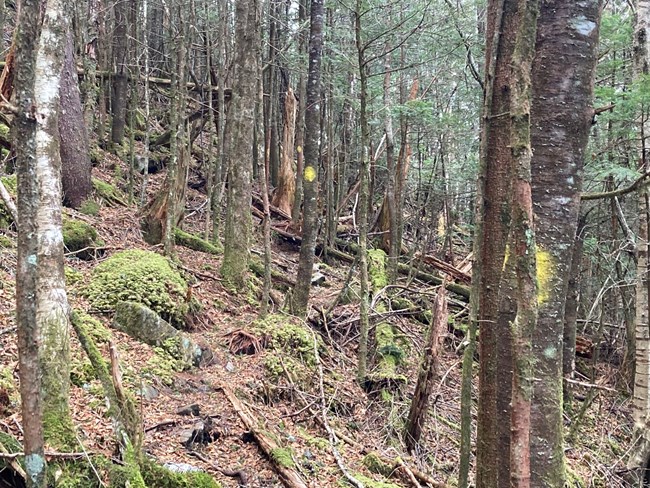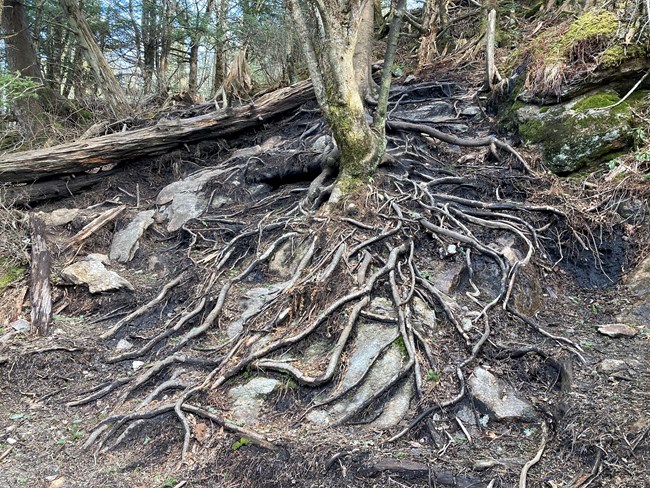Last updated: September 9, 2024
Article
Social Trails... Not for Socializing

NPS photo.
There are many ways to be a good example to others in the park, and this article highlights a topic that demonstrates how park users can recreate in ways that protect park resources.
A social trail is an unofficial, user-created path that forms over time, as visitors take detours off of designated trails. With enough foot traffic, these paths get worn down and can look like an official trail.
Social trails can have negative impacts to both the habitats of plants and animals in the area. These trails can also lead to confusing locations that get people lost, increasing exposure to unknown hazards and dangerous conditions. Social trails are not patrolled, maintained, or monitored
To set a good example for other visitors today and every day, stay on designated trails!
Social trails are shortcuts or detours that leave a designated trail. To do your part to stay safe and protect the area, stay on marked trails, check trailhead signs, and bring a map so you know the correct path. By doing so, you’ll protect yourself, other visitors, and the habitats of many plants, fungi, and animals

NPS photo.
Negative Impacts of Social Trails
Impacts to natural resources
Trails are built where they are for a reason, to minimize erosion, provide scenery, and steer clear of sensitive plants and animals. Hikers leaving official trails will walk through animal habitat, potentially harming individuals and biodiversity as a whole. Social trails can also lead to the trampling of small plants and fungi, as well as soil erosion, which can be very damaging to tree roots and cause stress to the tree.
Human impacts
In addition to negative impacts to the existing natural environment, social trails create added risks for people visiting the area. Since these trails aren’t designed, maintained, or monitored, they are more hazardous than a designated trail. There can be dangers such as downed trees, uneven surfaces, ticks, and snakes. Additionally, these unmarked trails can make it easier to get lost, because they typically branch off of existing trails and have no official markers. Since social trails are more hazardous, there is an increased risk of accidents, and the added difficulty of finding visitors in the case of an emergency.
